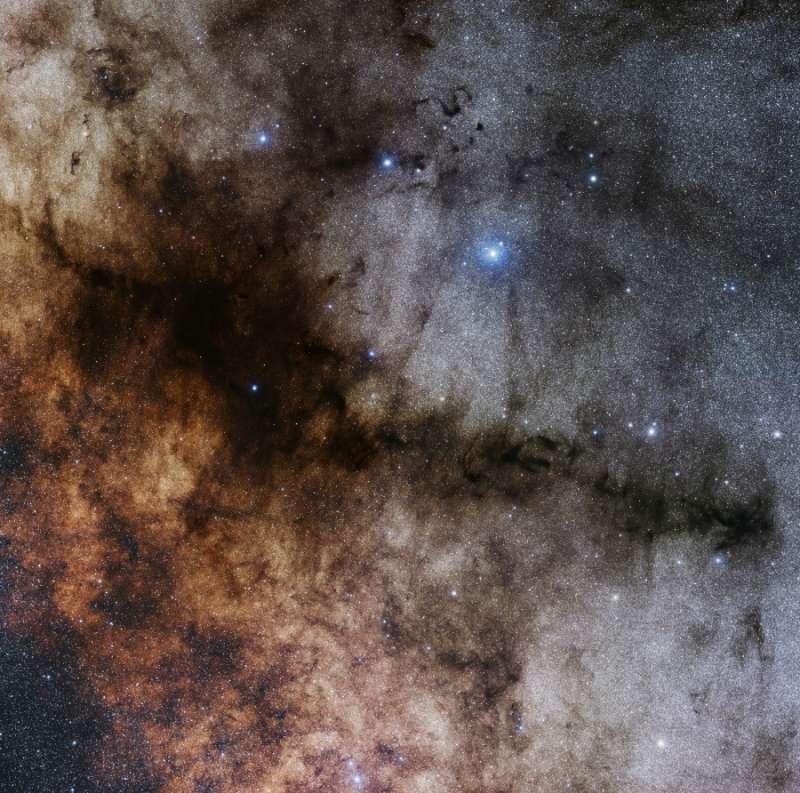The Pipe Nebula

Explanation:
East of Antares,
dark markings sprawl through crowded
star fields toward
the center
of our Milky Way Galaxy.
Cataloged in the early 20th
century by astronomer
E. E. Barnard, the obscuring
interstellar dust clouds
include
B59, B72, B77 and B78, seen in
silhouette
against the starry background.
Here, their combined shape suggests
a pipe
stem and bowl,
and so the dark nebula's popular name is the Pipe Nebula.
The deep and expansive view was represents nearly 24 hours of
exposure time recorded in very dark skies of the Chilean
Atacama desert.
It covers a full 10 by 10 degree field in the
pronounceable
constellation Ophiuchus.
The Pipe Nebula is part of the Ophiuchus dark cloud complex
located at a distance of about 450 light-years.
Dense cores
of gas and dust within the Pipe Nebula are collapsing to form stars.
Authors & editors:
Robert Nemiroff
(MTU) &
Jerry Bonnell
(USRA)
NASA Web Site Statements, Warnings,
and Disclaimers
NASA Official: Jay Norris.
Specific
rights apply.
A service of:
LHEA at
NASA /
GSFC
& Michigan Tech. U.

